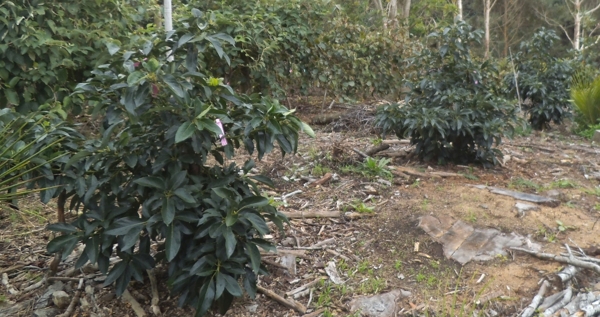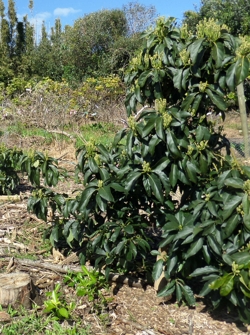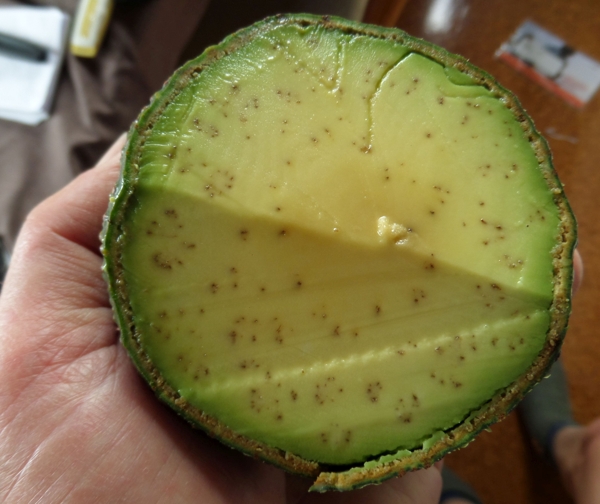Summary: The avocado 'Hashimoto' is a late flowering, late season, green-skinned avocado. It may be a genuinely early winter avocado in the Bay of Plenty and Gisborne, but the fruit usually come on the market about April. In Auckland it seems to be ripe in late summer/early autumn, but will store on the tree until mid July. Hashimoto trees have handsome deep green healthy leaves. The globular tree can be trained to be relatively compact, and because it flowers later in the season when it is warmer, it is more likely to set fruit. The fruit are round, thick skinned, large, with a medium sized seed. The flesh is firm, and of very good flavor. It is a little bit difficult to assess ripeness due to the hard shell-like skin.

 Hashimoto
has deep green healthy foliage on short, rather lax branches.
It does not have a central leader, and it sub-branches very
readily, making for a dense bushy appearance (photo left). The
new growth is attractive lime green. Hashimoto grows well, and
can end up as a big globular tree, but with a bit of attention
and ruthless pruning it
can be trained as a central leader (photo right), and
restrained in size.
Hashimoto
has deep green healthy foliage on short, rather lax branches.
It does not have a central leader, and it sub-branches very
readily, making for a dense bushy appearance (photo left). The
new growth is attractive lime green. Hashimoto grows well, and
can end up as a big globular tree, but with a bit of attention
and ruthless pruning it
can be trained as a central leader (photo right), and
restrained in size. As
with
all hard shelled avocados, it is hard to tell exactly when the
picked fruit has finally ripened. When the stem 'button'
readily falls off with a flick of the finger, the flesh is
usually ripe. A toothpick gently pushed against the exposed
flesh under the 'button' should glide in as easily as it would
glide into butter. If it doesn't, re-test it regularly (daily)
until it does.
As
with
all hard shelled avocados, it is hard to tell exactly when the
picked fruit has finally ripened. When the stem 'button'
readily falls off with a flick of the finger, the flesh is
usually ripe. A toothpick gently pushed against the exposed
flesh under the 'button' should glide in as easily as it would
glide into butter. If it doesn't, re-test it regularly (daily)
until it does.